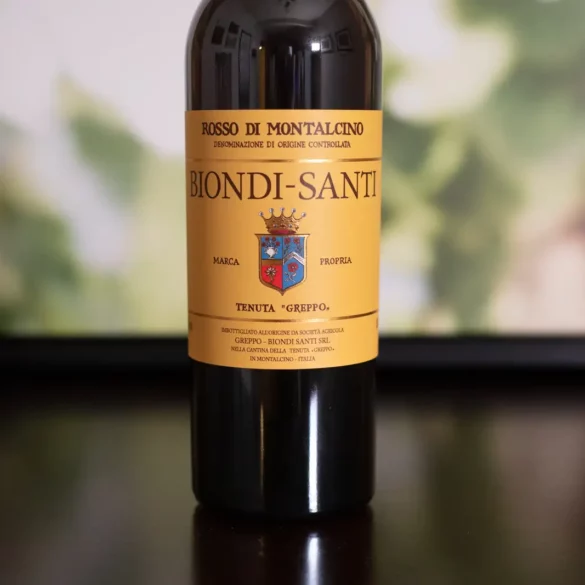A lot has been said about Biondi-Santi, the esteemed Tuscan producer that brought Brunello di Montalcino to the world in the 1880s. The estate’s lengthy history and high-level of commitment to quality represents perhaps the longest continuous string of prized vintages in all of Italian wine. What is more, Franco Biondi Santi deserves credit for defending the elegant, restrained, Sangiovese-focused style when it was truly under threat in the 1990s. That decade tried to render Brunello extinct through the inky, heavily extracted style of the day and even (gasp!) calls for Cabernet. Today, Brunello di Montalcino is back on form, particularly those estates that have followed Franco’s lead.
The estate’s lengthy history and high-level of commitment to quality represents perhaps the longest continuous string of prized vintages in all of Italian wine.
When I started writing about my visit to the estate earlier this year, the only appropriate format the article could take was as a First-Taste Guide, which I usually reserve for entire appellations. Franco passed away in 2013, and the family has now stepped completely aside from its day-to-day operations after selling the estate to EPI in 2016. Fortunately, EPI has appointed solid caretakers to the legacy, and the wines I’ve tasted under the new regime are superb. “Iconic” would not be an overstatement.
What often gets overlooked at Biondi-Santi is the Rosso di Montalcino, the DOC-level, starting-point wine. In fact, Rosso di Montalcino is one of the most underrated appellations in all of Italy. It’s the Scottie Pippen to Michael Jordan’s Brunello: workman-like, talented in its own right, yet never fully appreciated. The fact that Rosso di Montalcino is a DOC and yet the nearby Morellino di Scansano and regional Chianti are DOCGs is one of the great head-scratchers in Italian wine … that is, if you haven’t already figured out how flawed and meaningless the two designations are.
For Christmas Eve this year, I opened the 2020 Rosso di Montalcino from Biondi-Santi, and found the estate’s story blessedly intact in those swirling, heady aromas that seem to conjure black cherries, peppercorns, citrus and a quenching afternoon rainstorm in the summer. It occurred to me this time, that Biondi-Santi’s Rosso di Montalcino is probably one of Italy’s best examples of pure Sangiovese — that is to say, a basis for understanding Sangiovese’s core attributes, so that the truly epic wines can be appreciated for what they add to this lexicon.
As I poured this wine for my father — the kind of guy who doesn’t hand out praise unless it is truly deserved — there was a shared feeling in the air about the wine. “Yeah, that’s really nice,” he offered before I could say anything. Great wines become classics when they need no explanation at all.
2020 Biondi-Santi Tenuta Greppo Rosso di Montalcino
 Rosso di Montalcino DOC (Tuscany )
Rosso di Montalcino DOC (Tuscany )
Grapes: Sangiovese (100%)
Alcohol: 13.5%
Opinion: ★★★★★
Food-friendliness: Selective
Value: A Little Pricey
Imported by: Wilson Daniels
A beginner might like … tasting Biondi-Santi for the first time. In fact, I dare say that for many casual lover’s of wine, the Rosso di Montalcino (a $90 wine depending on where you get it) is enough of a taste to get the idea on why this estate is so cherished. The Brunello will set you back nearly $200, but even here, with the “entry level” Rosso, you get the elegance, the precision, and the satin-like smoothness that is a hallmark of the estate’s wines. Furthermore, there is no need to age this wine to understand any of this: it’s willing and amiable right now.
A wine obsessive might like … knowing that this wine comes from startling young vines (roughly 11 years old in 2020) considering the complexity and depth present in the glass.
Note: This wine was provided as a sample by the PR person representing their wines in the United States. Learn more about our editorial policy.





